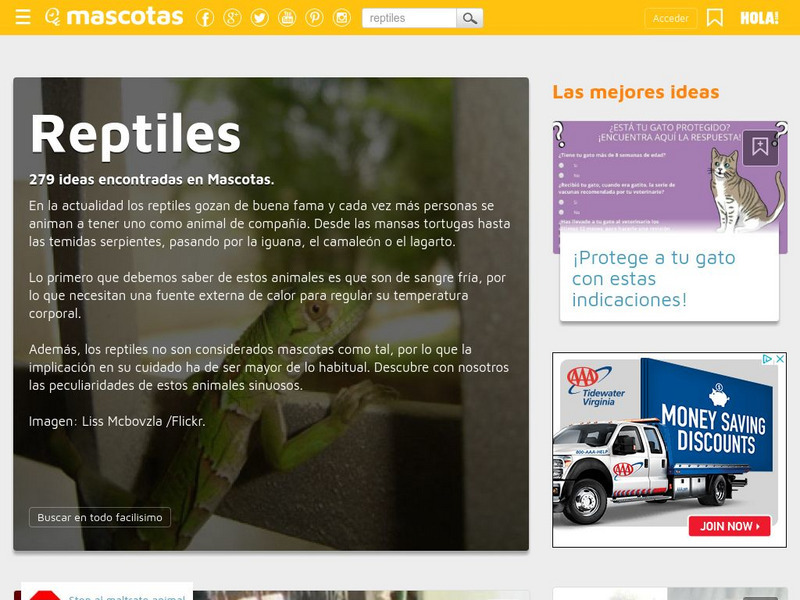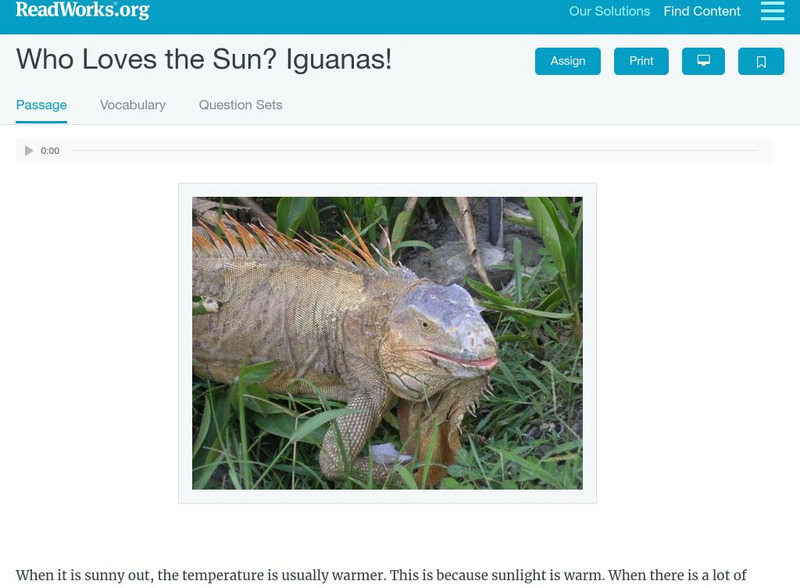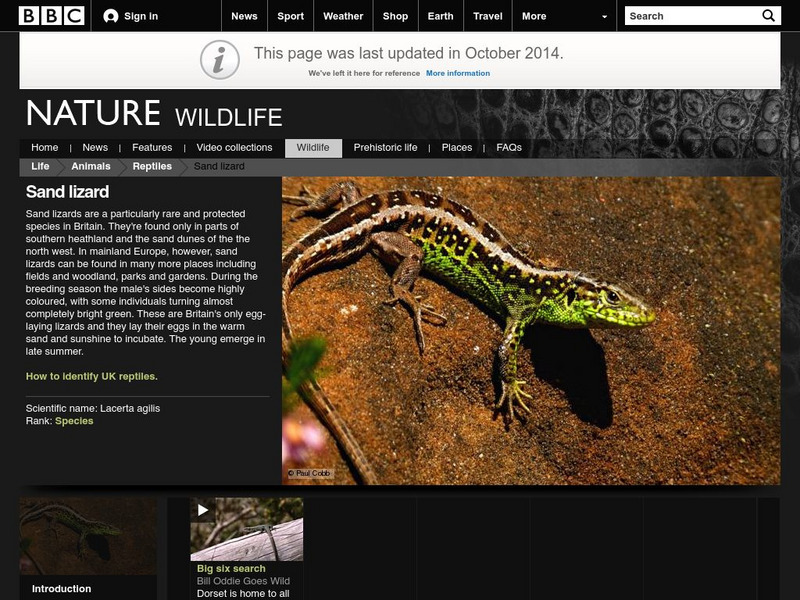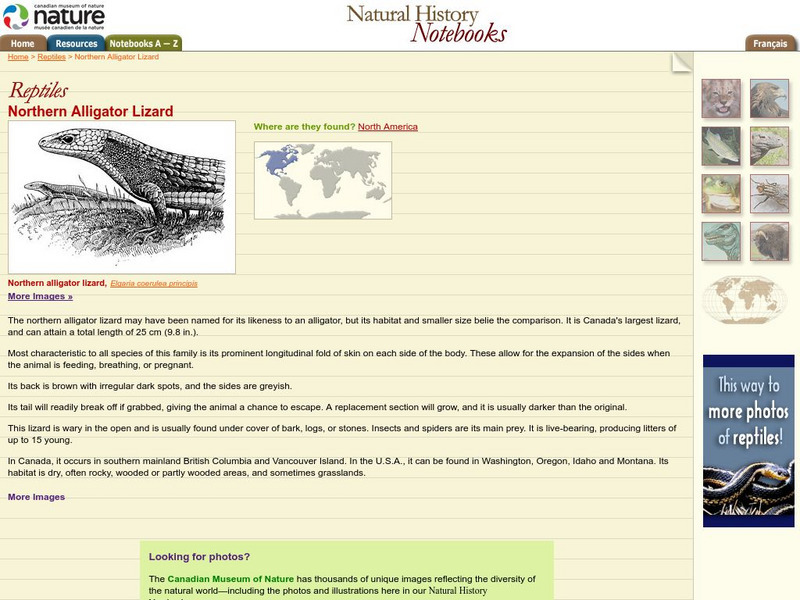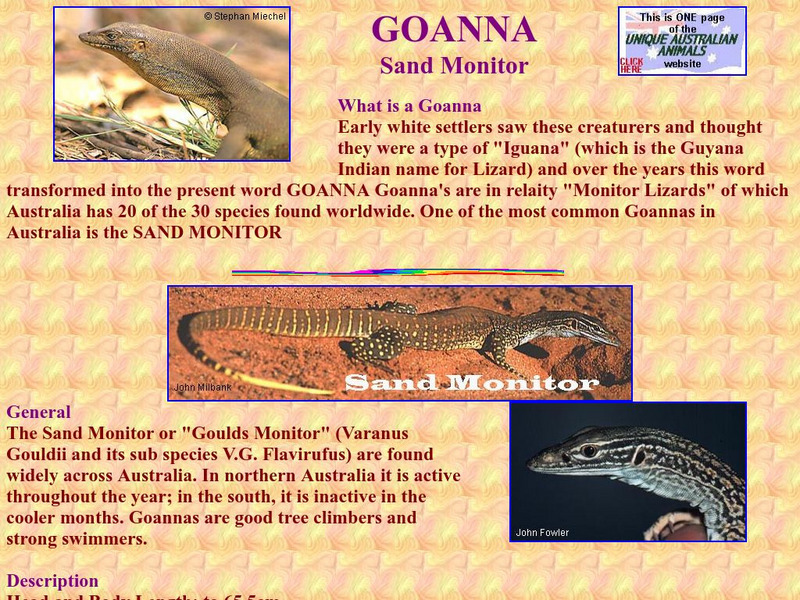Curated OER
X-Ray Eyes
Learners observe Australian X-ray paintings for information and to understand the art techniques used. Then they imagine and draw the inner organs of an animal. Students also research the anatomy of the animal to analyze the accuracy of...
Curated OER
Heating and Cooling a Really Large Lizard
Remind your middle school scientists how fox ear size varies depending on the climate they live in; large ears allow heat loss while small ears keep heat in. Discuss how a cold-blooded animal might try to regulate body temperature. Then...
Curated OER
Lizard Maze
In this mazes worksheet, students determine the most efficient strategy to help a lizard find its favorite shady spot through an intriguing maze.
Curated OER
Lizard and Bullfrog
In this science worksheet, learners compare a lizard and an amphibian. They answer several short questions and color in the pictures.
Curated OER
Using Symbols to Add
In this mathematics worksheet, 1st graders identify how addition sentences can tell a story. Then they identify how many objects there are in all. Students also identify what each symbols represents in an addition sentence.
Curated OER
The Reptiles
In this reptiles worksheet, students match 9 terms from a word list to the statement that it completes. Then students write 1 short paragraph about how they feel about reptiles.
Curated OER
Desert Animals
Students are asked if they think a roadrunner is a bird that is a fast runner or a slow runner? They are given a copy of Roadrunner Display Sheet. Students are asked how does a roadrunner protect iteself? They are given the following...
PBS
Pbs Learning Media: Wild Kratts: All About Lizards Lesson Plan
Students explore the diversity of lizards in terms of characteristics, behavior, and habitat. Activities feature five species of lizards and their special body structures needed for survival.
Other
Zoo Lab a Website for Animal Biology: The Reptiles
Some general facts about reptiles are presented with links to pages on different types of reptiles (turtles, alligators, lizards, snakes, and tuataras). The individual pages on the particular reptiles present characteristics and facts...
Smithsonian Institution
Smithsonian National Zoo: Reptile Recovery Center
This website presents fact sheets about numerous reptiles. Choose from a pull-down list between snakes, lizards, crocodilians, and turtles. The fact sheets contain information such as taxonomy, distribution and habitat, eating habits,...
San Diego Zoo Global
San Diego Zoo: Reptiles
What is a reptile? Use this resource to understand the basic facts of all reptiles and click to detailed information on many specific types.
San Diego Zoo Global
San Diego Zoo: Chameleon
Read all about the chameleon. The "Quick Facts" tells you information in a nutshell, and the main text explains how the chameleon changes colors. You can even hear the sound of a chameleon. An interesting resource.
Scholastic
Scholastic: Science Explorations: Uncover Lizards and Snakes
An exploration of squamates, or scaled reptiles. Take notes about lizards and snakes using the pdf "Squamate Chart" while viewing a slideshow, investigate the squamate anatomy and how squamates differ from other animals, such as insects...
PBS
Pbs: The Living Edens Madagascar
Informative site that includes information about the land of Madagascar as well as the animals that inhabit it. Accompanies a PBS video, but you do not necessarily need the video to check out the site. Includes lesson plans as well as a...
Other
Facilisimo: Mascotas: Reportajes: Reptiles
A wealth of information, entirely in Spanish, about a variety of reptiles that make good household pets. Colorful photographs accompany descriptions of different species.
Regents of the University of Michigan
Animal Diversity Web: Family Iguanidae (Iguanas)
Resource gives the physical and behavioral characteristics of the iguana, its habitat, food habits, and the ability to live with man.
A-Z Animals
A Z Animals: Animal Facts: Lizard (Lacertilia)
Presents an overview of Lizards, including their habitat, appearance, behavior, and breeding. Images of this species and statistics can also be found here.
Read Works
Read Works: Who Loves the Sun? Iguanas!
[Free Registration/Login Required] An informational text about iguanas and where they live. A question sheet is available to help students build skills in reading comprehension.
Texas Parks and Wildlife
Texas Parks and Wildlife: Texas Horned Lizard
This site is dedicated to providing information about and the preservation of the Horned Lizard (Phrynosoma cornutum). It describes the animal's history, as well as its habitat and distribution.
San Diego Zoo Global
San Diego Zoo: Lizard
This resource provides extensive information about lizards, including photos and an audio clip.
Other
Dino Dictionary: Profiles of Over 300 Known Dinosaurs!
This site is a must for learning about dinosaurs. It profiles over 300 known species. It also lets you hear how to pronounce the name.
Canadian Museum of Nature
Canadian Museum of Nature: Northern Alligator Lizard
The northern alligator lizard is Canada's largest lizard. Described are its characteristics, and habitat.
Unique Australian Animals
Unique Australian Animals: Goanna
This webpage from Unique Australian Animals offers a small description of the Goanna (Sand Monitor).















